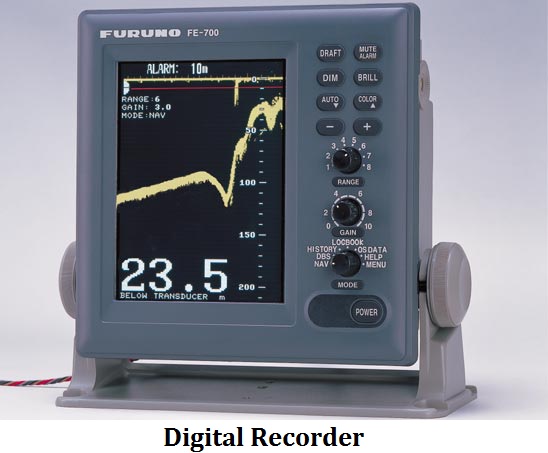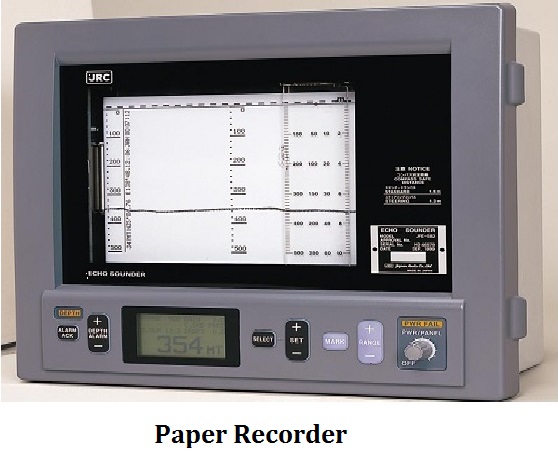What is Recorder of Echo-Sounder?
- This is the component of the ES a mariner would be using on the bridge.
- Earlier, the echo of the bottom used to be recorded as a mark on paper.
- Currently the old style paper recorder have been replaced by electronic displays showing the bottom echo as blip.
- However, IMO regulations require that a ship must have hard copies of past depth soundings which can only be done on paper.
- A paper recorder consists of a stylus which is made to move across electro-sensitive paper.
- When the transmitter fires its pulse, the stylus marks the paper at the zero of a graduated scale.
- While the pulse travels to the bottom the stylus moves in tandem across the paper but at a speed proportional to half the speed of sound.
- Why half? Because the stylus has to represent the to and fro journey of the transmitted pulse.
- On detection of an echo, the stylus again marks the paper which shows depth of water.
- Even after marking the depth, the stylus will continue traveling towards the end of the paper.
- On reaching the end, the stylus flies back to the zero signifying next transmission and the paper moves down providing a fresh surface for the next echo.
- The process above will be repeated.
- A trace can be seen to be developing on the paper with time on one axis and the echoes on the other building a profile of the sea bottom on paper.
- The speed of the stylus will move depending upon the chosen range scale.


